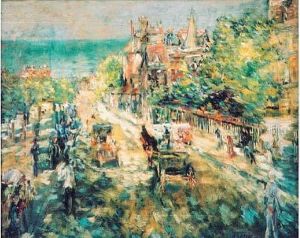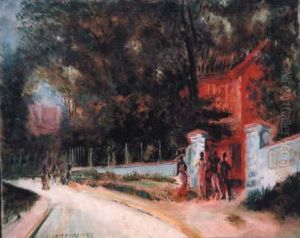Anatoli Arapoff Paintings
Anatoli Lvovich Arapoff, born in Moscow, Russia, was an artist of Russian heritage who developed his craft during the early 20th century. Born into the tumultuous backdrop of pre-revolutionary Russia, Arapoff's early life and artistic development were influenced by the cultural and political upheavals of his time. His family background, education, and early exposure to art are not extensively documented, which is the case for many artists whose lives were disrupted by the Russian Revolution and subsequent civil unrest.
Arapoff's work is often associated with the post-impressionist movement, a testament to his innovative approach to color and form. Despite the lack of extensive records regarding his education, it is evident from his artistic style that he was well-versed in European modernist movements, which he would have likely encountered either through formal training or personal study.
The artist's career progressed amidst the backdrop of World War I, the Russian Revolution, and the Russian Civil War. These events inevitably impacted his artistic output and career trajectory. Like many of his contemporaries, Arapoff may have experienced significant constraints on his ability to create and exhibit his work. Additionally, the rise of the Soviet regime brought about a cultural shift that favored social realism over the modernist styles that Arapoff was associated with, possibly leading to challenges in gaining recognition within his homeland.
Arapoff's life was cut short during World War II, as he died in 1942, at the age of 41. The circumstances of his death are not widely publicized, but given the timing, it is possible that the war played a role, directly or indirectly. His passing during such a volatile period meant that his works were at risk of being lost or destroyed, and his artistic legacy might not have been fully recognized or preserved.
Despite the scarcity of biographical details, Anatoli Arapoff's contribution to the arts can be appreciated through the surviving pieces of his work. These paintings reflect the complex interplay of Russian artistic heritage and European modernism, showcasing a unique style that captures the essence of a turbulent epoch in Russian history. Today, his works serve not only as artistic expressions but also as historical documents that offer insights into the era's aesthetic and cultural sensibilities.

